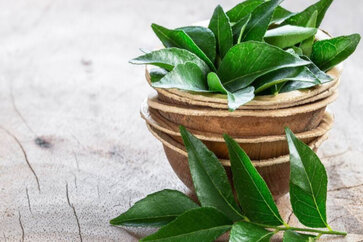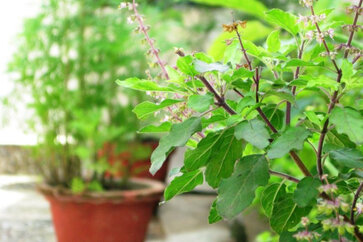About Ayurveda | The Basic Principles Of Ayurveda

Traditional Indian medicine called Ayurveda includes dietetics, herbal medicine, aromatherapy, massage, yoga, singing, breathing, and meditation.
Origin of Ayurveda
Ayurveda, or Ayurvedic medicine, is considered the oldest holistic medicine in the world: it considers man as a whole (body and mind). Created by the sages of classical India, the Rishis, this Ayurvedic tradition dates back more than 5,000 years.[1]
From Sanskrit ” Ayur” (life) and ” Veda” (science, knowledge), the term Ayurveda is translated as “knowledge of life or longevity”.
WHO has recognized Ayurveda as a complete system of traditional medicine. According to the WHO definition, therapies in general traditional medicine include drug, non-drug, manual, and spiritual therapies.[2]
Principle of Ayurveda
Ayurveda considers that the infinitely small (human beings, molecules) is governed by the same principles as the infinitely large (planets, galaxies). In observing nature, the Indian Sages discovered five elements: ether (or space), earth, air, water, and fire. They deduced that these states of matter, present in nature, were equally so in the human being.
In humans, these five elements constitute three doshas or biological humor (dosha vata, dosha pitta, dosha Kapha), the combination of which is unique for each individual. When these three doshas are balanced, the individual is in good health. On the other hand, if the way of life unbalances the doshas, it can lead to disease.
Why consult a professional Ayurveda?
Ayurveda, or Ayurvedic medicine, is confined to the field of well-being and relaxation. It is therefore recommended as an aid for relaxation, well-being, personal fulfillment or to restore a certain nutritional balance.
How do you practice Ayurveda?
Ayurveda is a practice aimed at treating the sick person and not the illness. In other words, the Ayurveda practitioner first and foremost seeks out the reasons for the imbalance in order to relieve symptoms permanently.
This Indian traditional medicine includes:
- Ayurvedic dietetics: foods are classified according to their taste, energy, and their post-digestive action.
- Indian herbal medicine and aromatherapy: plants are classified according to the five states of matter (ether, fire, air, water, earth)
- Ayurvedic massages: they are carried out in an individualized way according to the predominance of the dosha
- Sound therapy: some vibrations would re-harmonize his personal frequency to achieve well-being. Practitioners use music reproducing the sounds of nature or mantras, sacred phrases often sung
- Precious stones: some crystals or precious stones are placed on points or energetic zones in order to rebalance the doshas.
Traditional Indian medicine is often complemented by yoga, singing, breathing, and meditation. The choice of technique and the number of sessions will depend on your practitioner.
Contraindications to Ayurveda
According to the Ayurvedic technique used, there are certain contraindications, especially in the case of food allergies (herbal medicine), allergies to certain oils (Ayurvedic massage), or certain essences (aromatherapy). In the case of pregnancy, Ayurvedic massage is contraindicated, as well as the use of certain plants and essences.
Note: It is recommended to use a professional recognized in his field.
How is the first Ayurveda consultation?
This first consultation begins with an Ayurvedic assessment, to determine your native constitution (the original combination of your doshas) and your state of imbalance.
As with allopathic medicine, the assessment is based on observation, touch, and interrogation:
- Examination of the pulse, tongue, eyes, skin, and nails.
- Information on your lifestyle, the state of your digestion and your elimination (saddle, urine, sweat), your diet, your sleep, and your mental and emotional functioning.
- Taking into account your medical history.
At the end of this assessment, the Ayurvedic practitioner determines a personalized program to rectify the imbalances during the next sessions.
This program may include:
- Life hygiene tips
- Body treatments and massages
- The use of food supplements or spices
- Physical exercises (postures) or mental exercises (breathing, relaxation)
- The aromatherapy and sound therapy, stones, and colors.
The choice of the method depends on the specific knowledge of the practitioner. The frequency of the sessions also depends on the practitioner according to the initial assessment carried out.
The goal is to interrogate little by little so the therapist can learn it properly, and advise you to make a smooth change in your lifestyle.
How to choose a professional in Ayurveda?
Ayurveda is not recognized as a medical practice all around the world but it is taught as such a faculty of medicine in India. Ayurvedic professionals, therefore, advise not to replace medical treatment appropriate to a disease.
In some countries, private institutes offer Ayurvedic degrees after one to four years of study. These formations are not officially recognized by the State but they are recognized by the national institute of Ayurveda (India) as an independent Ayurvedic College was established in August 1946 by the Government of Rajasthan and this College was merged to form the National Institute of Ayurveda known as NIA[3]. It is recommended to choose a practitioner in the directory of a professional association.
Duration and price of an Ayurveda session
Ayurveda consultation takes about one hour. It includes an analysis of three doshas and tips for a healthier lifestyle and a better diet. The average price is between 50 dollars and 100 dollars, but in India, it is quite cheap it begins from 10 dollars onwards not refundable by Social Security.
Books on Ayurveda
- Ayurveda, Science of Self-Healing, Dr. Vasant Lad, ed. Guy Trédaniel: a book to explain the principles of Ayurveda and their applications.
- Ayurveda Health: A Practical Guide to Ayurvedic Therapy, Dr. David Frawley, ed. Turiya: a book that targets common diseases and gives treatment methods mainly through nutrition and herbal medicine.
- The Book of Ayurveda: The Personal Guide to Well-Being, Judith H. Morrison, ed. The Courier du Livre: a book to discover its constitution according to Ayurvedic principles and adopt the best way of life to avoid the disease.
























Аюрведа — это древняя система медицины, которая занимается не только лечением болезней, но и учит нас различным методам, необходимым для здоровой и счастливой жизни.
The basic motive of Ayurveda is to treat & cure, the ailing & suffering, and maintain health of healthy human beings, ever since the day of its inception.
Ayurveda, the ancient medical science of India, is accepted as the oldest scientific medical system, with a long record of clinical treatments
Widely regarded as the oldest form of health care in the world, Ayurveda is an intricate holistic medical system, lifestyle and philosophy that originated in India and Sri Lanka some 5,000 to 7,000 years ago